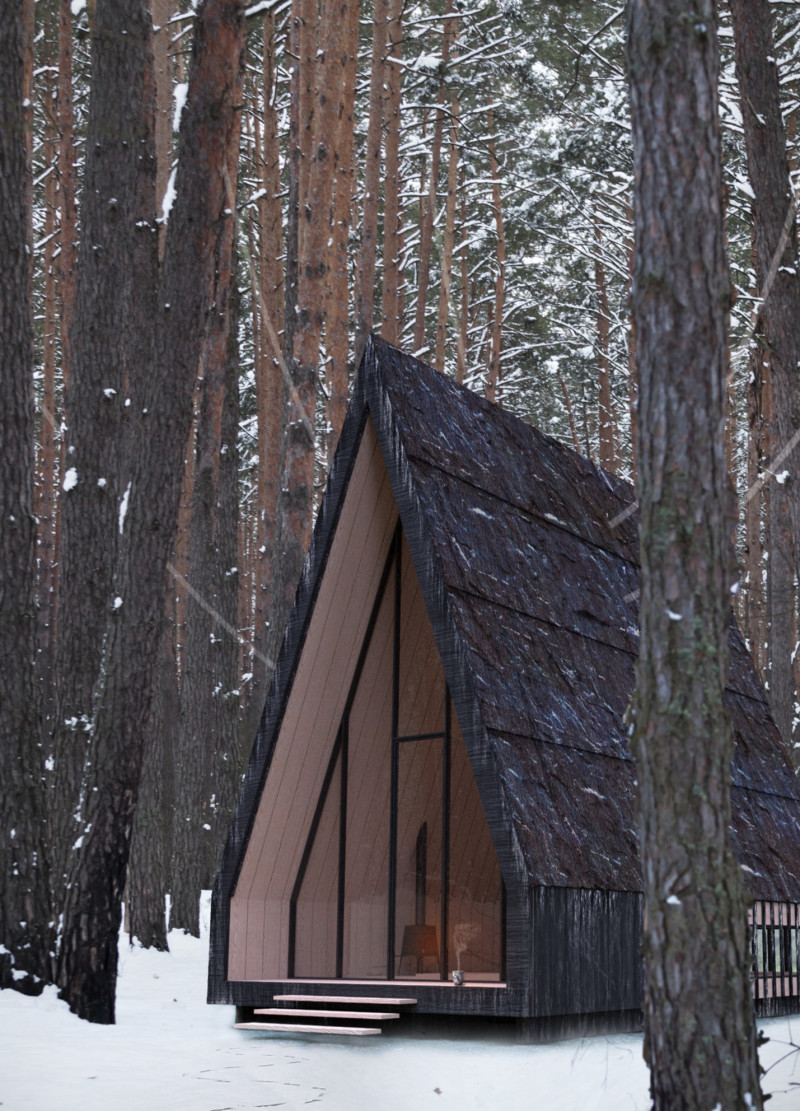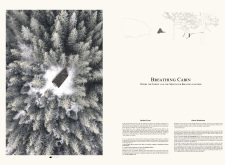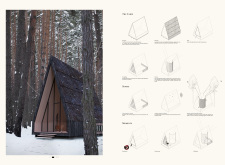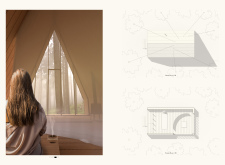5 key facts about this project
The primary function of the Breathing Cabin is to provide a space for contemplation and reflection, allowing visitors to engage with nature in a meaningful way. The cabin’s design incorporates locally sourced materials, such as wood, glass, thatch, and concrete. This selection not only promotes sustainability but also aligns the architecture with regional characteristics. The overall design promotes a seamless transition between indoor and outdoor spaces, enhancing the experience of meditation through an interaction with the environment.
The architectural design features an A-frame structure, which is both practical and distinctive. This shape addresses climatic concerns such as snow accumulation while maintaining a visual connection to traditional local architecture. The full-height glass panels serve as walls, allowing abundant natural light to flood the interior while providing framed views of the surrounding forest. The layout is thoughtfully organized to encourage both individual contemplation and social interaction, demonstrating a balance between personal and communal spaces.
The project stands out due to its focus on creating a holistic experience. By integrating sensory elements—such as ambient forest sounds, natural light, and the tactile qualities of different materials—the design fosters a deeper level of interaction with the environment. This approach is not commonly seen in typical meditation spaces, where the emphasis is often placed solely on functionality. Instead, the Breathing Cabin focuses on the emotional and psychological impacts of architecture.
Another unique aspect is the cabin’s sustainable design ethos. The use of eco-friendly materials minimizes the ecological footprint, while passive heating strategies harness sunlight to maintain comfort throughout different seasons. This commitment to sustainability not only enhances the user experience but also serves as a model for future architectural projects seeking to balance functionality with environmental responsibility.
The Breathing Cabin exemplifies how architecture can create spaces that are not only functional but also foster a profound connection with nature. For those interested in exploring the design further, a comprehensive review of architectural plans, sections, and designs is encouraged to gain a deeper understanding of the project’s architectural ideas and approaches.


























